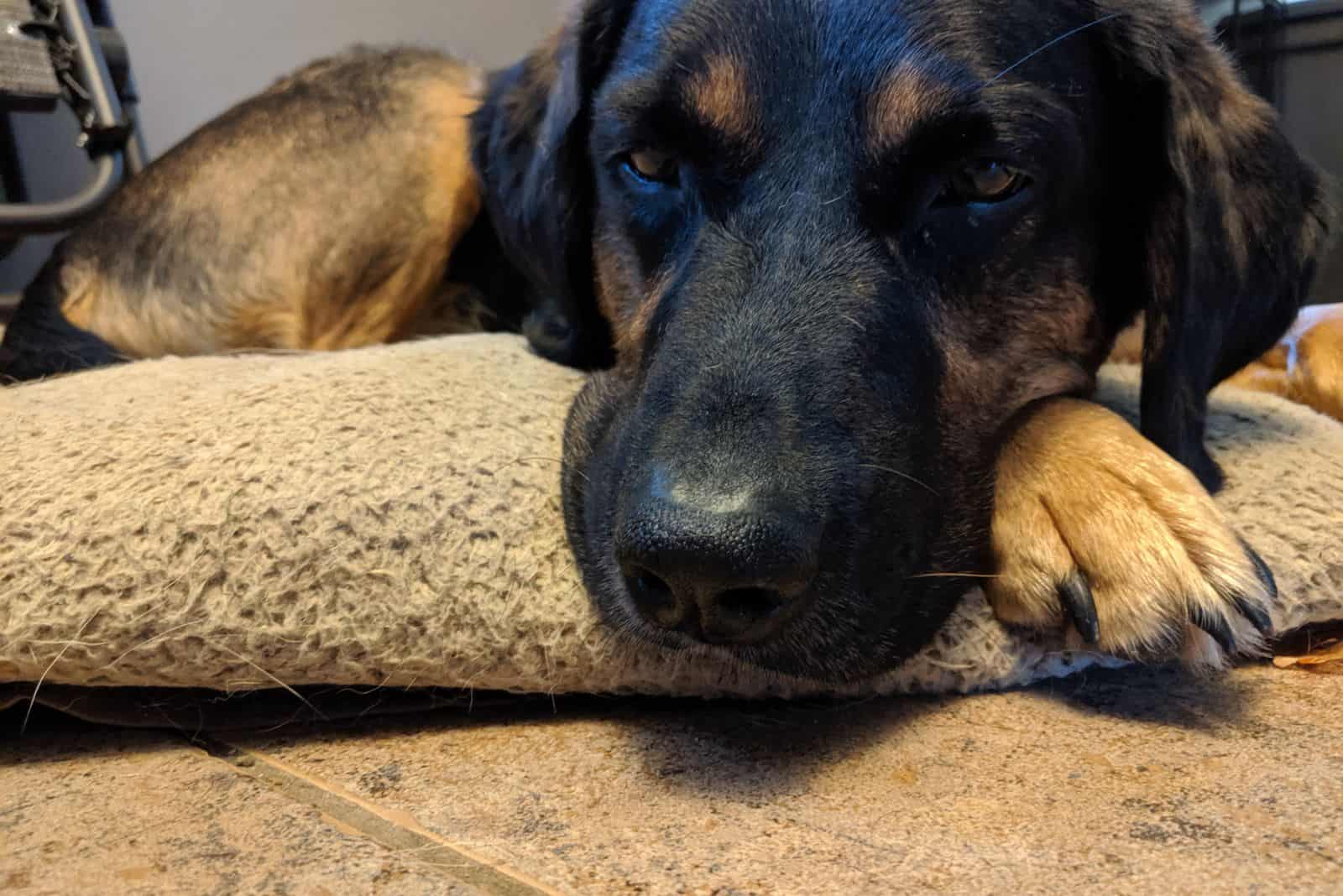Do you currently possess or intend to purchase a German Shepherd Coonhound mix? If so, you most likely have many inquiries regarding this unusual mixed breed.
What characteristics distinguish this dog? How should this breed of dog be cared for? We address all of these questions and more in detail in this article.
A brand-new hybrid with an entirely unique personality is created when two extremely distinct breeds are combined, the GSD and the Coonhound.
This dog will most likely be medium to large in size. Aside from the size, it is characteristic that this is a very active dog breed. Overall, this dog is strong, sociable, submissive, and intelligent.
The breed of a dog will affect a number of aspects of its look, demeanor, and intelligence. You may learn a lot through breeding!
It’s crucial to remember that each hybrid dog will have a distinct personality and physical traits.
While you might anticipate that a dog’s history and breeding will have a significant impact on its traits, there is no surefire way to forecast exactly how it will appear or behave based only on its species or genetic make-up.
It’s a good idea to know what breeds make up this combination since a dog’s breed can reveal a lot about its past, physical characteristics, and probable tendencies.
What Is The German Shepherd Coonhound Mix?
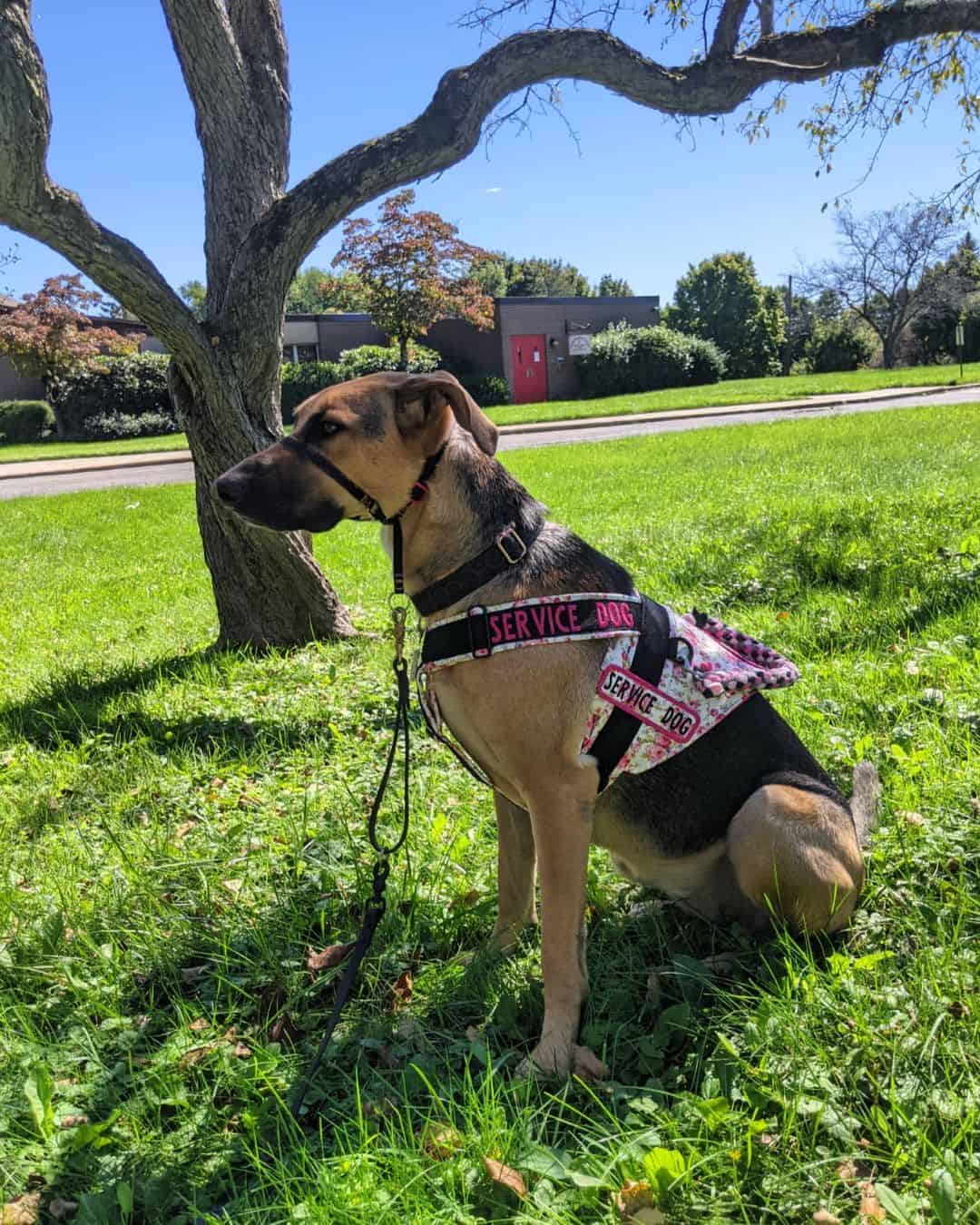
In addition to being highly clever, and sociable, these dogs are also family-protective.
A German Shepherd and a Coonhound are combined to create a hybrid breed of dog called a Coonhound German Shepherd. The offspring of these two lovely breeds will have distinctive personalities.
But there are a few things to consider once you take a chance and get one of these canines.
Before purchasing a German shepherd and Coonhound mix puppy, you should think about a number of things, including its personality, health problems, grooming requirements, exercise requirements, and compatibility with other animals.
How And When Did The Coonhound German Shepherd Mix Come To Life
Every mixed breed dog has a unique personality, as well as looks, in a certain way. A hybrid dog will likely exhibit characteristics from both of its parents.
This implies that a hybrid with the ambition and intelligence of a German Shepherd and the finely tuned senses of a Hound is possible.
Instead, you can end up having the drive of a Shepherd as well as the boisterous bay of a Coonhound. Anyone could perhaps make a good assumption of how this mixed dog breed may have come to be!
It seems sensible to conduct research for that reason. Mixed breeds are distinctive and unusual, but they can also present unique difficulties.
Rest assured that any undesired hereditary qualities or inclinations may be controlled with training, exercise, owner commitment, and socializing.
It is possible to trace the origins of this hybrid back to crossbreeding that took place across the country in the 1990s.
We need to first study more concerning the parent breeds of the dog in order to comprehend the physical qualities, psychological traits, personality types, and general care characteristics of any mixed breed dog.
Well, let’s examine the Coonhound and German Shepherd’s respective historical backgrounds, in order to make a quality conclusion about our high prey drive mixed breed.
History Behind The German Shepherd dog
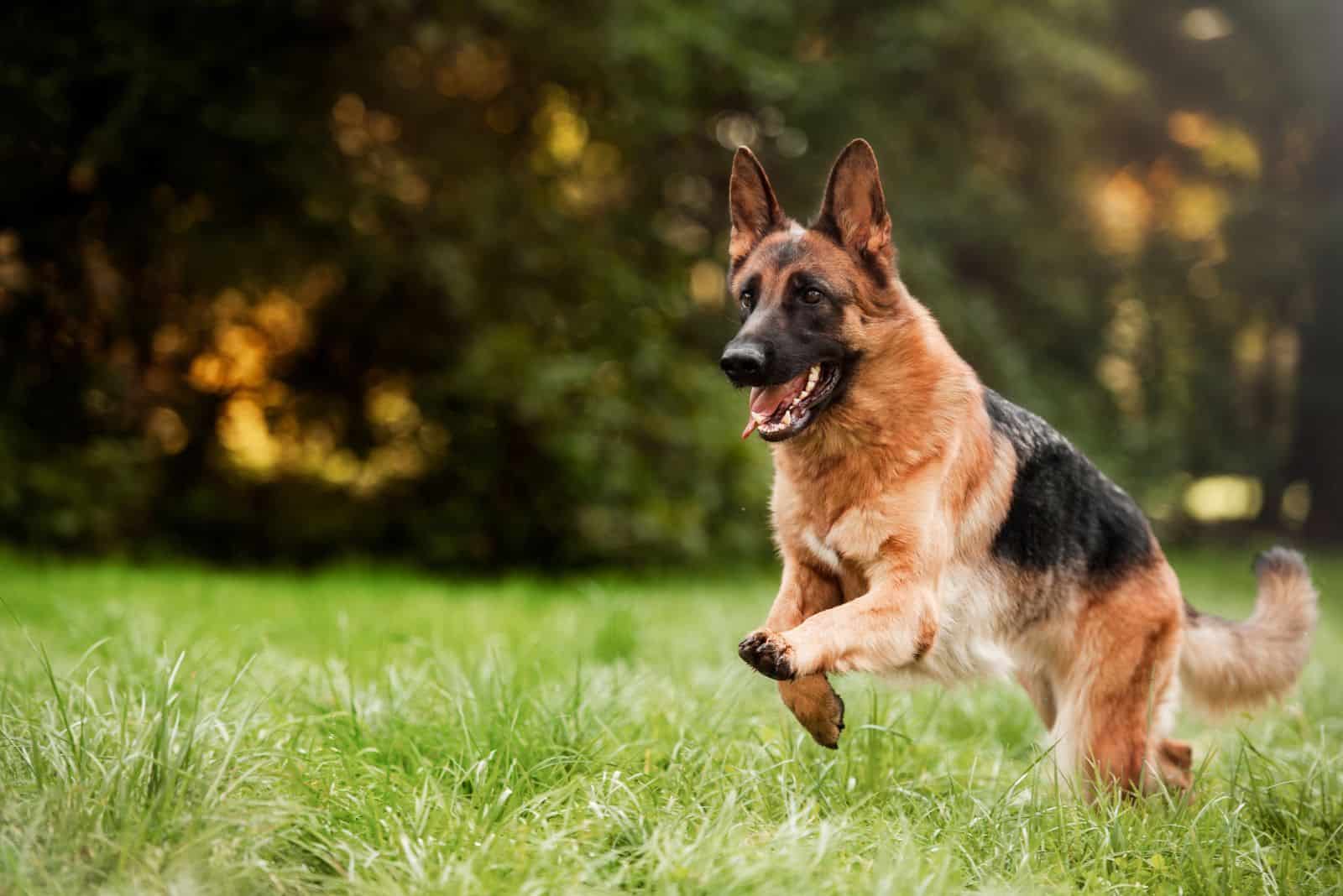
German Shepherds are very well-liked all around the world. Since they make wonderful family companions, people adore these devoted dogs.
The first GSD, a relatively young breed of dog, was created in 1889 by Max Von Stephanitz, who also is known as being the breed’s founder.
A dog by the name of Hektor Linksrhein was exhibited to Von Stephanitz in 1899 while he was watching a dog exhibition. Hektor, the result of a few generations of careful breeding, perfectly embodied what Von Stephanitz thought a working dog ought to be.
He was impressed by the dog’s stamina and so enamored by his intelligence, loyalty, and attractiveness that he decided to buy him right away.
He switched the dog’s name to Horand von Grafrath after buying the dog, and Von Stephanitz started the German Society for the German Shepherd Dog.
Horand, who was the very first dog entered into the society’s breed registry, was recognized as the first and initial German Shepherd Dog.
Beowulf, the best GSD offspring, was a dad to a total of 84 pups, largely as a result of being allowed to breed with Hektor’s other kids, when Hektor was mated to another Horand’s offspring.
All German Shepherds descended from Beowulf’s offspring, who were also inbred, share a genetic ancestor. However, there are around 7 types of GSD at the moment.
Von Stephanitz is credited with creating the German Shepherd Dog because it is said that his firm, unyielding leadership played a significant role in the society’s success.
He raised these dogs primarily for herding, but the present GSD has also performed a variety of other jobs, such as assisting troops in World Wars I and II, carrying messages, acting as rescue dogs, and serving as guard dogs.
History Behind The Coonhound
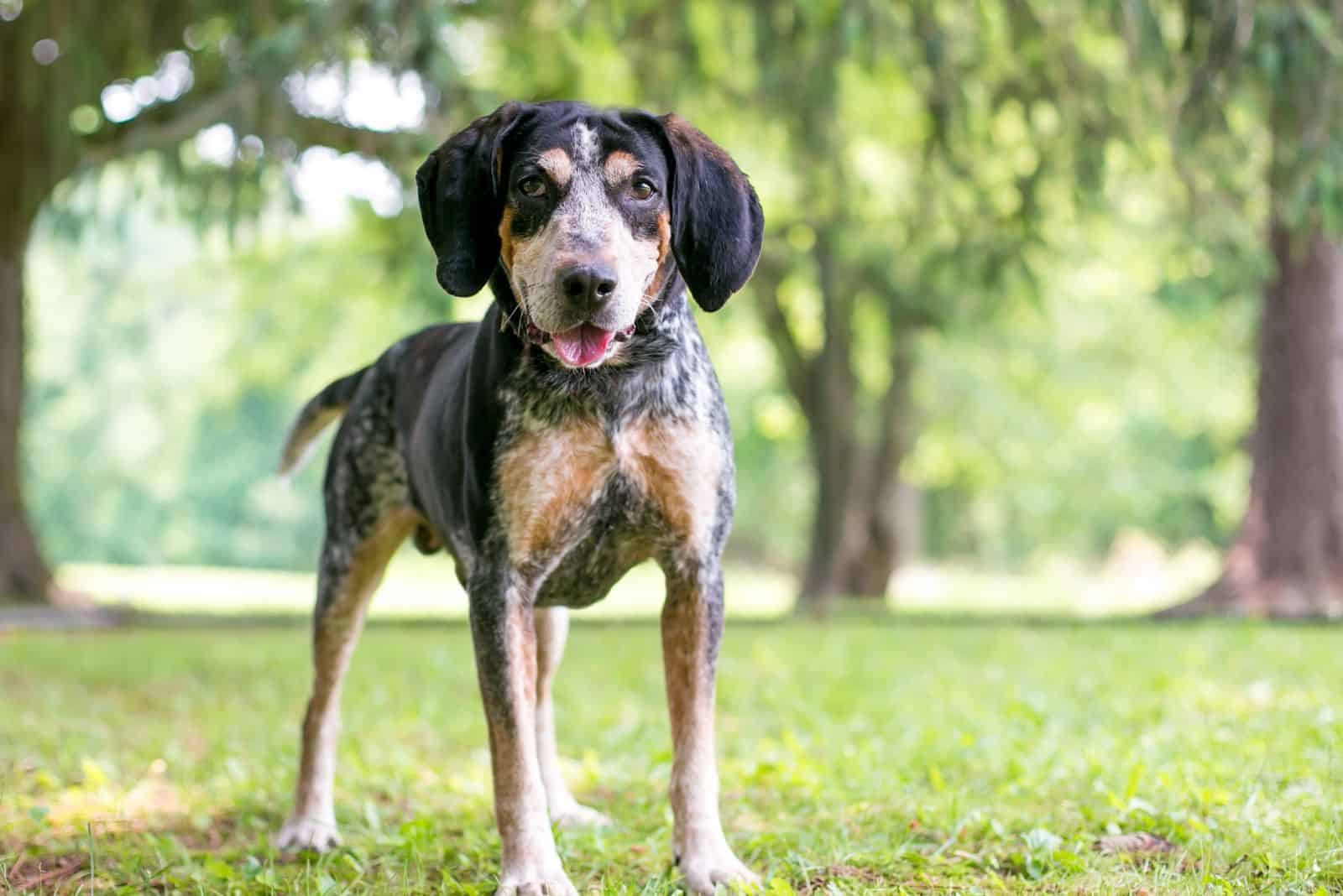
By combining the Bloodhound, Black and Tan Foxhound, and the extinct Talbot Hound, the Black and Tan Coonhound was created.
The first Coonhound to be recognized as a distinct breed from the Foxhound was indeed the Black and Tan Coonhound.
The Black and Tan Coonhounds were present in the White House during the first administration of the United States (1789–1797). They went by the names Drunkard, Taster, Tipler, as well as Tipsy.
Being as high energy of a dog breed as it is, the Black and Tan Coonhound was famous for wailing at his prey when trailing and treeing raccoons. Their immaculate sense of smell is something that characterizes them and makes them different from other dog breeds.
Even in challenging terrain, this working dog breed named Coonhound has been employed to hunt different kinds of animals like bears, boars, mongoose, deer, and mountain lions.
Coonhound Breeds
It can survive both extreme heat and the rigors of cold. The AKC initially acknowledged it in 1945. The hunting, following, guarding, athletic, and tracking dog skills of the Black as well as Tan Coonhounds are only a few of the many.
Coonhounds are not only incredibly active, but they also make the ideal hunting partner. This huge breed of dog, well-known for raccoon hunting, was first developed in the US from bloodhound and black-and-tan Coon hound ancestors.
It can be challenging to distinguish between the slight variations in Coonhound breeds because of breed divergence through time. You can use the list below as a broad guide to the main Coonhound breeds currently in existence.
- American English Coonhound
- Black and Tan Coonhound
- Bluetick Coonhound
- Redbone Coonhound
- Plott Coonhound
- Treeing Walker Coonhound
Since The Black and Tan Coonhound, the Bluetick Coonhound and the Redbone Coonhound are the most popular choices for people and dog lovers, we are going to tell you a bit more about these purebred dog breeds.
The Black And Tan Coonhound
Wonderfully warmhearted, the Black and Tan Coonhound is a dog lover’s top choice. It’s highly jovial and ideal for kids. Although they are relatively large, Black and Tan Coonhounds seem to be very athletic. They are commonly referred to as “night hounds.”
One of the most active breeds of dogs is the Black and Tan Coonhound due to its extremely high energy and strong need for activity. Unexpectedly, the Black and Tan are one of the more laid-back and easygoing canines on this list.
However, a Black and Tan could be difficult in terms of drooling as well as shedding because it also drools a lot and sheds quite a bit. They can also be quite challenging because they are tricky to train.
In addition to being uncomfortable being alone, Black and Tans have the disadvantage of not being very apartment-friendly.
So, it could be wise to choose a breed that requires less time and effort if you’re a first-time pet owner or reside in a smaller flat.
The Bluetick Coonhound
Dogs of the Bluetick Coonhound breed have been around since colonial times. They were created by breeding various European hound breeds, particularly the French Staghound, with American hounds.
The English Coonhound was the official title before it was altered in 1946.
A smooth, short coat covers the Bluetick Coonhound. Due to its low rate of shedding, it is also ideal for homes. It is crucial for the owner to keep their long, droopy ears clean and dry in order to avoid ear infections.
The Bluetick Coonhound is an extremely sociable and lovable dog breed. Bluetick Coonhounds communicate well with other pets far more easily than many of the other varieties of this breed. They are therefore ideal for homes with multiple pets.
Given that Bluetick Coonhounds are notorious for getting bored easily, it is crucial for owners to provide their dogs with enough exercise.
Since they belong to the canine family known as hunters, they are quite active and demand a lot of time spent outside.
One of the Bluetick Coonhound’s notable drawbacks is that they don’t really tolerate solitude or small surroundings. Owners of small homes or apartments should use caution when selecting this breed.
The Redbone Coonhound
The earliest hounds raised by Scottish colonists to supply consistent supplies of raccoon meat were Redbone Coonhounds. As a result, they became ardent and determined hunters with a lot of stamina and excellent tracking skills.
They are distinguished by their gorgeous crimson coat and protruding ears. Given that they were developed to hunt small, swift prey in open areas, these dogs move quite quickly.
Additionally, they are ideal for apartment life because of their laid-back and amiable personalities.
The Redbone Coonhound’s short, smooth hair is easy to care for and requires little maintenance. Due to their extremely low shedding rate, frequent brushing and occasional bathing should be sufficient to keep them clean.
Redbone Coonhounds are extremely energetic dogs, making them ideal for sports enthusiasts or outdoor enthusiasts. Early socialization is usually sufficient to adequately socialize and train your Redbone, and they are rather simple to train.
The Redbone Coonhound breed’s only significant drawback is that because of their high levels of energy, they have a tendency to get restless. They could stray into public spaces and bother the owner.
Appearance Of A Coonhound German Shepherd Mix
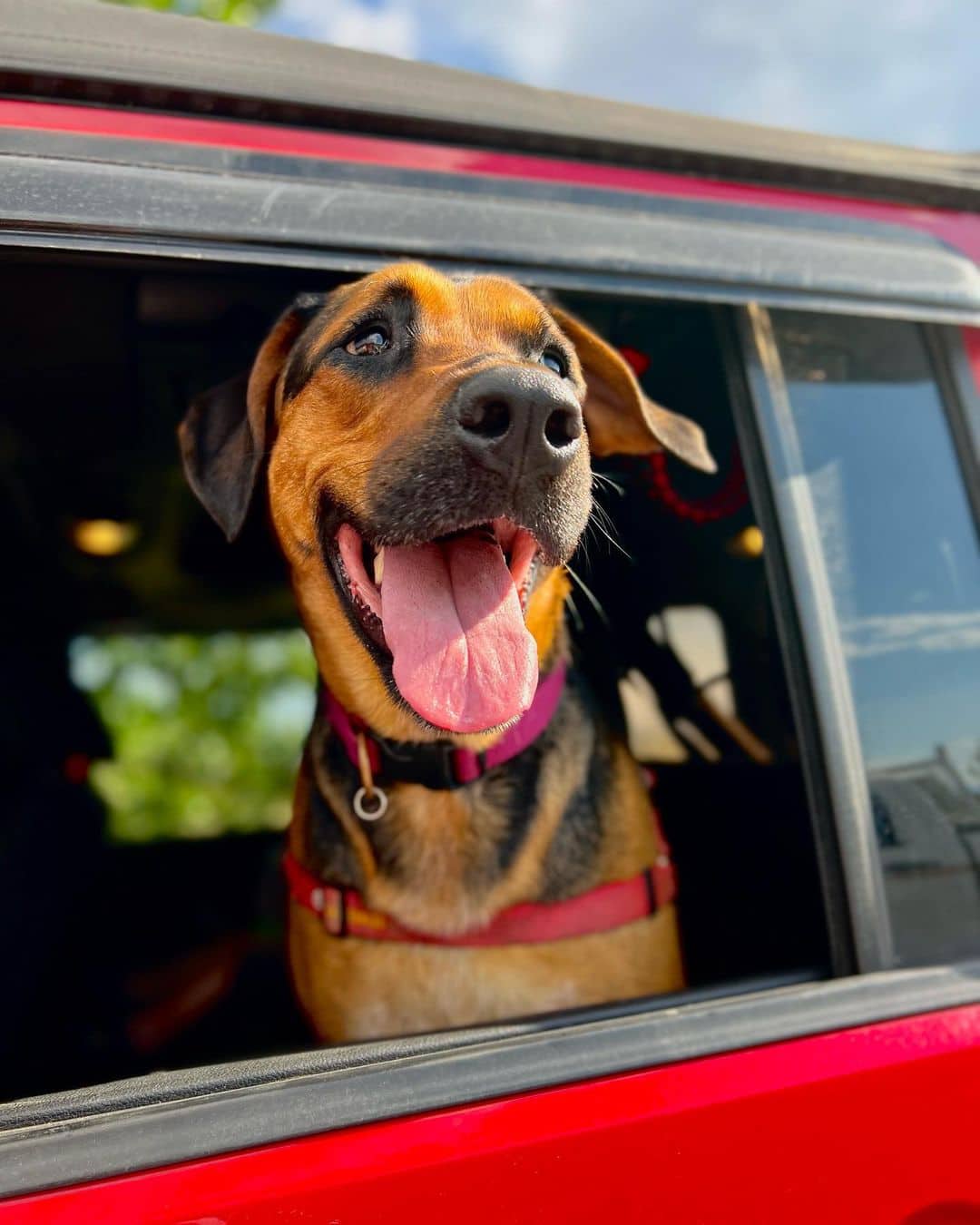
You can anticipate dogs may possess physical traits from both parent breeds. It depends on the dominant genes of the parents, but the outcome may be completely surprising. They’ll likely resemble both of their parents to some degree.
It follows that the size of the German Coonhound Mix would fall between medium and large. There are various breeds of Coonhounds, therefore you should be aware that their sizes can differ.
Due to their double coat, these canines are protected from other animals while also remaining warm throughout the chilly winter days.
They might also have a fine coat of medium length like a Black and Tan Coonhound or a coat that is fluffy like their GSD father. They have coats in four different colors: black, brown, red, and silver.
This hound mix will most likely inherit the long ears and hound noses from the Coonhound, as well as the long-haired tail from the German Shepherd parent. However, the most important thing that the dog will inherit for sure is being a great companion.
Weight ranges from 45 to 80 pounds for the German Shepherd Coonhound Mix. Coonhounds may weigh anything between 45 and 80 pounds, whereas German Shepherds typically weigh from 66 to 88 pounds.
This indicates that when the puppy is fully grown, you can anticipate having a medium-sized to large dog.
What Kind Of Personality Does A German Shepherd Coonhound Mix Have?
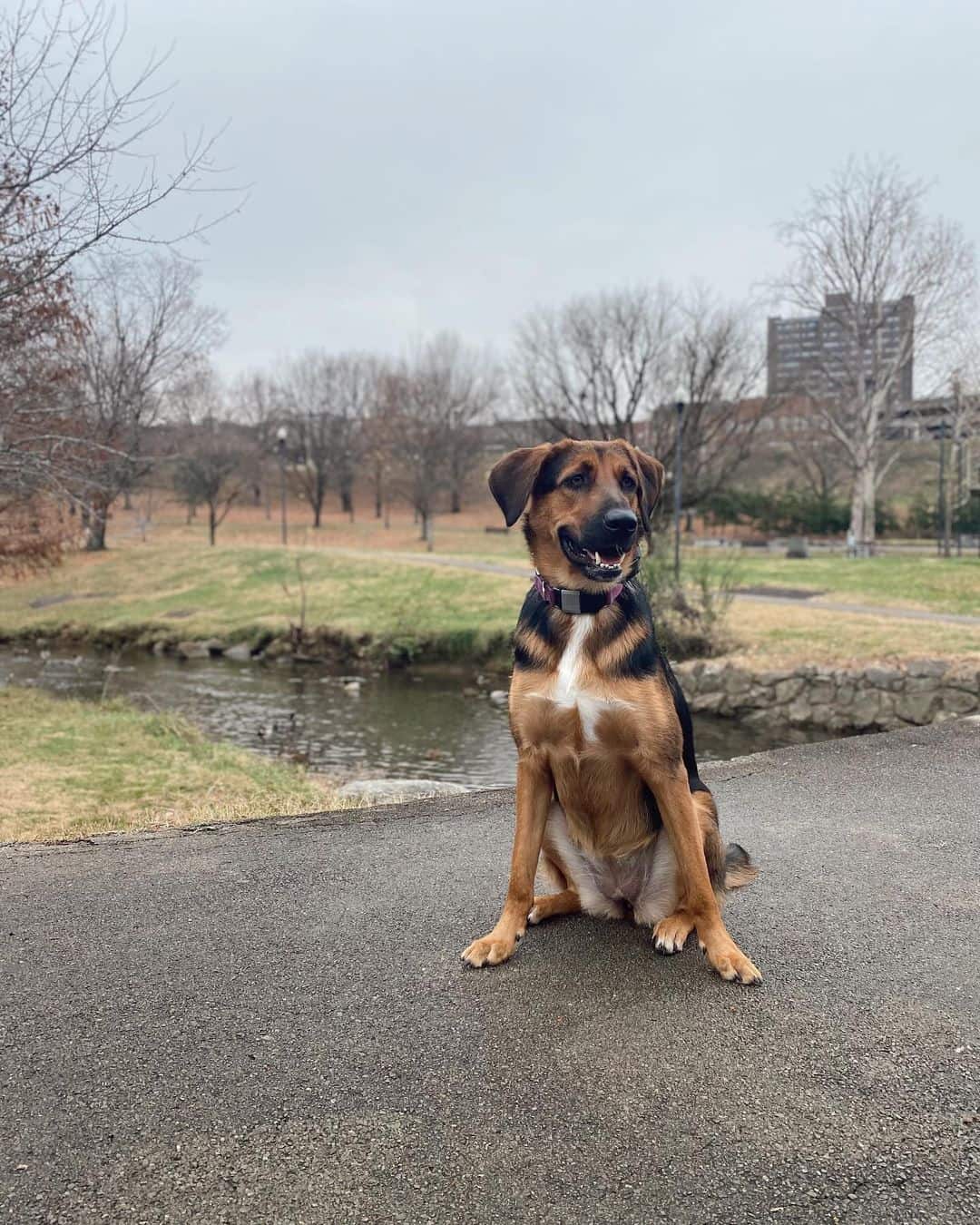
This dog will probably be outgoing, driven, and eager to work. However, Coonhounds may emit a bark which shakes up the entire area, and German Shepherds are infamous for displaying territorial behaviors and are difficult to control if not taught correctly.
The temperament and behavioral habits of your dog will also be greatly influenced by training and socialization.
Considering that German Shepherd Coonhound hybrids are most likely to be high energy, prospective owners should be prepared to provide a significant amount of exercise and entertainment.
These Coonhound hybrids may possess the drive, intelligence, and sharply heightened senses of a German Shepherd.
These Coonhound hybrids may possess both the sharply developed senses of a Hound and the drive, intelligence, and keenness of a German Shepherd, or the drive of a shepherd as well as the resounding bark of a Coonhound.
The Coonhound was developed to chase, track, and capture live game animals. It is essentially a descendant of the German Boar-Tracking Dog. Long ears and an incredibly acute olfactory system enable them to waft scents in the direction of their powerful hound noses.
The GSD Coonhound Mix can be prone to howling, digging, territorial characteristics, barking at almost anything unusual, and a high prey drive. Given their background, it is expected that they will be a rather loud breed.
Does The German Shepherd Coonhound Mix Appear To Be A Family Dog?
They will be highly devoted, motivated by food, and interested in nature.
You may already know that Coonhounds can have a tendency to be too loving and even sentimental. They are well recognized for being sweet-natured and having a really pleasant demeanor.
The GSD/Coonhound mix will be amiable and enjoy interacting with people. Both GSDs, as well as Coonhounds, require a lot of exercise, thus it’s definitely best to stay away from getting a mix if you don’t have the space or the time to provide them with the necessary exercise.
Having said that, everything ought to be alright if you’re able to walk them each day. German Shepherd Coonhounds make ideal pets due to their demeanor and adaptability for living in your home alongside you and your family.
They generally prefer being around kids and pets after receiving some basic training, and they like unwinding and cuddling on the couch every evening.
Because they were developed specifically to hunt raccoons, coonhounds tend to be more stubborn and have higher hunting drives than other breeds.
Raising your Shepherd Coonhound right won’t be easy, and the GSD pretty much assures it, but with a little perseverance and patience, you’ll succeed!
Given the outspoken personalities of both parent breeds, your Shepherd mix will likely bark a lot. But this is unimportant because that is just how they communicate.
Thanks to their high energy levels and curious mindset, they are a great family dog that will get along well with smaller kids as well as other animals, if raised properly. You may also be able to walk them off-leash if raised not to respond to small animals.
Is The German Shepherd Coonhound Mix A Health Issue Free Dog?
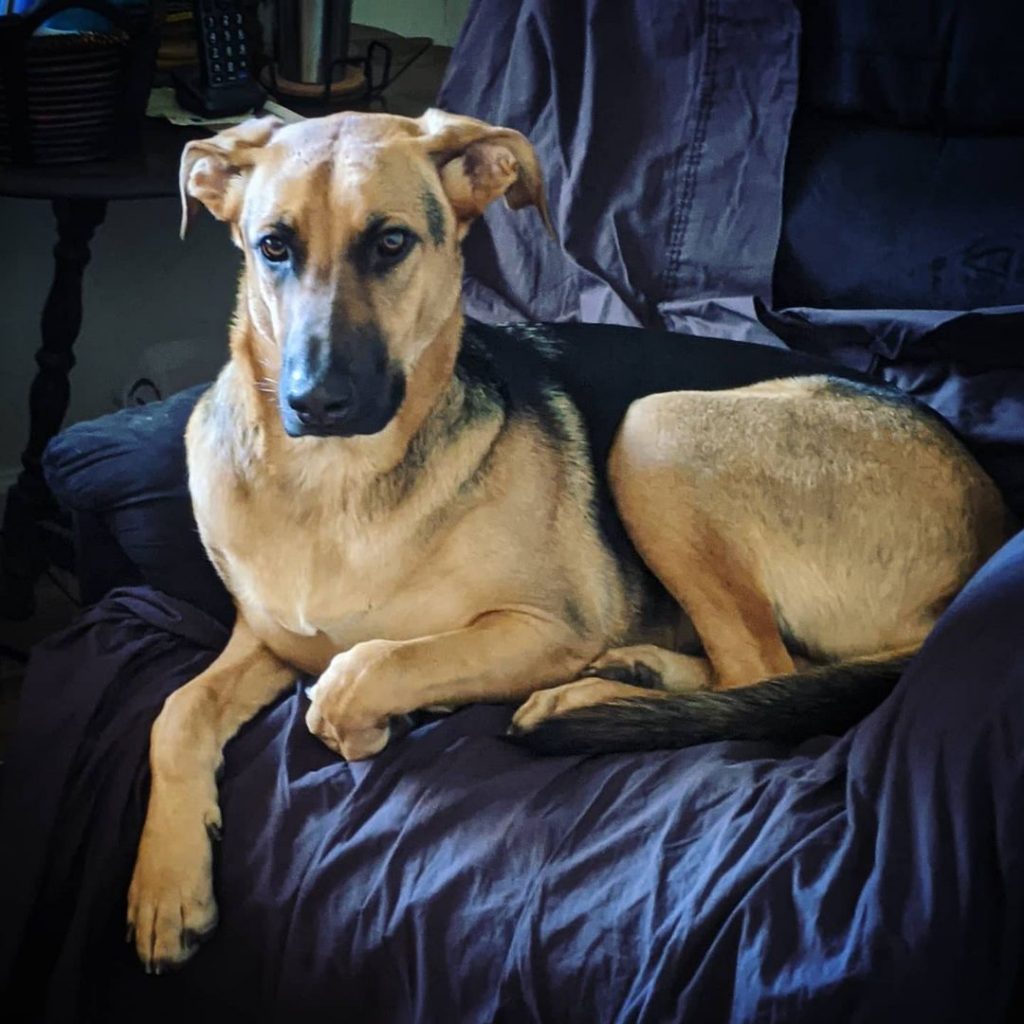
This loyal dog breed is sadly not excused when it comes to health problems. Just as with any other dog breed on the planet, this mixed dog breed may potentially have some health issues.
Additionally, you may increase the lifespan of your pet with a healthy lifestyle and improved daily routine. To monitor your dog’s health, be sure to offer them good food and schedule routine checkups with your vet.
Coonhound German Shepherd Mixes live 10 to 14 years on average.
The potential health issues of a German Shepherd Coonhound mix are not inevitable to be displayed. However, all of the health issues are connected to some illnesses that occur with the parent breeds.
Those are:
1. Bloat
Known medically as gastric dilatation-volvulus (GDV), this dangerous ailment can be fatal if neglected. GDV, often known as “bloat,” develops when a dog’s belly twists after being full of gas, food, or liquid.
GDV can proceed swiftly and without prior notice. There is always a crisis. A “simple bloat” or dilatation is the term used to describe stomach distension on its own.
This straightforward bloating may develop by itself and may go away by itself. Risk varies with severity and length of bloat, but it is still possible to endanger life. It may continue for hours without being life-threatening in certain circumstances.
The issue, according to Dr. Luschini, is that it could at any time proceed to a GDV, in which the stomach bends and rotates on its axis.
When it occurs, the pet owner won’t be aware. Because of this, keeping an eye on a bloated situation at home is quite risky for the owner.
2. Hip Dysplasia
Dogs who have hip dysplasia do so when they are still growing.
It causes the hip joint to loosen, which leads to dysfunction and discomfort.
The hip’s bone and cartilage start to deteriorate as the dog grows. This eventually results in arthritis, muscular atrophy, and decreased mobility.
Large-breed dogs are more frequently affected, and research indicates that it is inherited.
3. Thyroid Health Issues
Insufficient thyroid hormone release in your dog’s organism results in hypothyroidism, which slows your dog’s metabolism. Dogs are more prone to this illness than other household pets, although it typically improves with the right medicine.
Hypothyroidism is almost always brought on by the thyroid gland being directly destroyed. Usually, either lymphocytic thyroiditis or sporadic thyroid gland atrophy causes this damage.
All of your dog’s organ systems are impacted by low thyroid levels. Although hypothyroidism can cause a wide range of signs in dogs, they are all primarily caused by your dog’s sluggish metabolism.
Maintaining A German Shepherd Coonhound Mix
You may be curious about how many grooming appointments you will schedule for your dog annually.
Given that German Shepherds can demand a bunch of maintenance, this is a reasonable issue. Fortunately, this hybrid is easier to groom than a purebred German Shepherd.
Combining a Coonhound and a German Shepherd results in a dog with something like a moderate grooming level because both breeds were developed to be simple to groom and maintain.
This is because it is impossible to predict the sort of coat your dog may have until it is an adult. Brushing and bathing your German Shepherd Coonhound should be carried out on a monthly or as-needed basis.
Remember that crossbreeds with more Coonhound-dominant fur will demand more care than mixtures with more Shepherd-like coats.
How To Feed Them?
Similar to having to feed any mid to large dog, feeding a Coonhound German Shepherd Mix seems simple. To give these canines the fuel they require for long walks and plenty of exercises, they require a high-calorie diet.
If you feed your Coonhound Shepherd Cross high quality dog food, your veterinarian should approve of it. The diet must be appropriate for your pet’s age, condition, and amount of exercise.
Feed your German Shepherd Coonhound properly from puppyhood. When it becomes an adult dog, 2 or 3.5 cups of premium kibble should be given twice daily. Resist overfeeding this cross dog since it may cause obesity, especially as it ages.
To improve your dog’s bones and joints, add probiotics and wild Alaskan salmon oil. Finally, don’t forget to provide your hybrid dog with clean water every day in order to ensure they are hydrated.
Training And Exercise Needs
Your Coonhound German Shepherd Mix is a smart, obedient, and dependable dog. Therefore, you should give them cognitive tasks, care, and activity.
However, given that each dog is unique when it comes to training, it is advised that you get the Coonhound Shepherd Cross started with training as soon as possible.
Puppies of the Coonhound Shepherd breed might start misbehaving as soon as you take them home. Housebreaking is the most crucial aspect of your mixed-breed dog’s training. Start introducing various kinds of instruction as your puppy matures.
Use positive reinforcement when teaching this dog to make your job easier. In addition, when rewarding your dog, be calm, persistent, and careful.
Socialization will be crucial, as was already mentioned. Your dog will get more self-assurance and social acceptance as a result.
The Coonhound German Shepherd Mix has to be exposed to a range of sights and sounds. Your dog will develop an understanding of what is appropriate and unacceptable behavior if you do it that way.
Final Word
Since you have read everything you need to know about the German Shepherd Coonhound mix, you will need to weigh out the good and the bad things regarding this large-sized dog breed.
Buy them from a good dog breeder that takes good care of the parent dogs, train them, feed them with high quality dog food, and you will have a healthy dog with a long life expectancy.
However, I would personally not recommend this dog breed for first-time owners, because their parent breeds are working dogs, which have high energy levels, territorial behaviors and a high prey drive.
For you, this means that you will face a puppy that needs a lot of exercise and training!
However, they are great with children and other animals if they are raised accordingly. Bringing them up around various individuals in various situations will help socialize the puppy.
